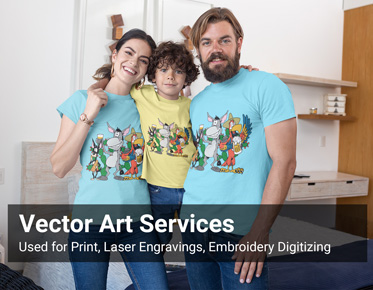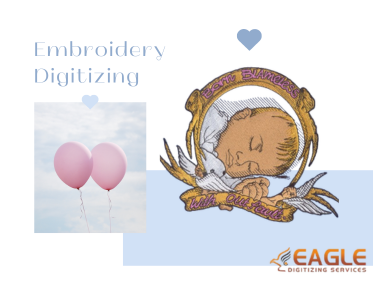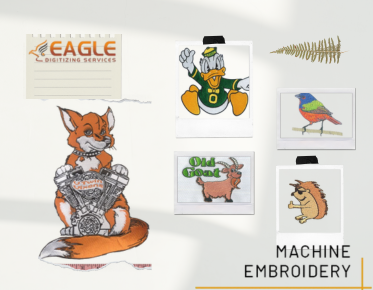Traditional vs. Digital Screen Printing Techniques How to Choose the Best San Marcos T-Shirt Printing Method for Your Needs
Screen printing is a versatile and time-honored technique that involves
transferring ink onto a substrate, usually fabric, through a mesh screen. This
process is distinguished by its ability to produce vivid, durable designs that
stand the test of time. With roots tracing back to ancient China, screen
printing has evolved significantly, embracing both traditional methods and
cutting-edge digital advancements.
The Evolution of Screen Printing: From Traditional to Digital
The
journey of screen printing is a fascinating tale of innovation and adaptation.
Initially, it was a purely manual process, requiring skilled artisans to
meticulously apply ink through hand-cut stencils. As technology advanced, so
did screen printing techniques. The introduction of photo-reactive chemicals in
the mid-20th century revolutionized the process, allowing for more intricate
designs. Today, digital technology has further transformed screen printing,
making it more efficient and accessible than ever before.
Traditional Screen Printing 101: How It Works
Traditional screen printing begins with creating a stencil, or screen, which acts
as a template for the design. This screen is placed on the fabric, and ink is
pushed through the mesh openings using a squeegee. Each color in the design
requires a separate screen, making it a labor-intensive but highly rewarding
process. The result is a rich, textured print that boasts unparalleled
longevity.
The Digital Revolution: How Digital Screen Printing Changed the
Game
Digital
screen printing has catapulted the industry into a new era. This method
utilizes inkjet technology to apply designs directly onto the fabric,
eliminating the need for screens. It's perfect for high-detail, multi-color
prints and allows for rapid production and customization. Digital printing has
democratized screen printing, making it accessible to small businesses and
individuals alike.
Pros and Cons of Traditional Screen Printing
Advantages of Traditional Screen Printing
Cost-Effectiveness
for Bulk Orders
Traditional screen printing shines when it comes to large quantities. Once the
screens are set up, producing hundreds or even thousands of prints becomes
economically efficient.
Long-Lasting Prints with Rich Colors
The depth and vibrancy of colors achieved through traditional screen printing
are unmatched. The thick layers of ink create a durable print that withstands
repeated washings.
Versatility in Ink and Material Options
From cotton to polyester, traditional screen printing can handle a variety of
materials and specialty inks, including metallic and fluorescent options.
Disadvantages of Traditional Screen Printing
Longer
Setup Time
Setting up screens for each color can be time-consuming. This makes traditional
screen printing less ideal for rush orders or projects with tight deadlines.
Limited Color Range per Design
Each additional color requires a new screen, which can complicate and limit
designs with a wide color palette.
Not Ideal for Small Orders
The setup costs and time make traditional screen printing less economical for
small runs or one-off projects.
Pros and Cons of Digital Screen Printing
Advantages of Digital Screen Printing
Perfect
for Detailed, Multicolor Designs
Digital printing excels at producing intricate designs with a plethora of
colors. There's no need for multiple screens, allowing for more creative
freedom.
Quick Turnaround Times
With no screens to set up, digital printing offers a faster production process.
This is ideal for last-minute orders and small batches.
Great for Small Runs and Customization
Digital printing is cost-effective for smaller orders, making it perfect for
prototypes, personalized items, and limited editions.
Disadvantages of Digital Screen Printing
Higher
Cost Per Unit for Large Orders
For large quantities, digital printing can become more expensive per unit
compared to traditional methods.
Color Matching Can Be Tricky
Achieving exact color matches can be challenging with digital printing, as the
process is less precise than traditional screen printing.
Limited to Certain Fabric Types
Digital printing works best on specific types of fabrics, primarily those with
a high cotton content.
Comparing Costs: Which Method Suits Your Budget?
Setup and Production Costs: Traditional vs. Digital
Traditional
screen printing involves higher initial setup costs
due to the creation of screens. However, once set up, the production cost per
unit drops significantly with higher volumes. Digital printing, on the other
hand, has minimal setup costs but a higher per-unit cost, especially for large
runs.
Cost Per Unit: When Does Each Method Shine?
For
bulk orders, traditional screen printing is more economical. Digital printing
is ideal for small quantities and detailed designs where the higher cost per
unit is offset by the lack of setup fees.
Speed and Efficiency: Meeting Your Deadlines
Digital
printing wins in terms of speed, especially for small orders
and complex designs. Traditional
screen printing, while slower to set up, can be very efficient once production
is underway.
Quality Matters: How Each Method Affects Print Longevity
Traditional
screen prints are renowned for their durability and resistance to fading.
Digital prints have improved significantly, but may not match the longevity of
traditional methods, especially on frequently washed garments.
Color Vibrancy and Accuracy: Which Method Reigns Supreme?
Traditional
screen printing produces exceptionally vibrant and consistent colors. Digital
printing offers greater flexibility with color gradients and photorealistic
designs, though it may struggle with exact color matching.
Customization Capabilities: Personalizing Your T-Shirts
Digital
printing is superior for customization, allowing for unique designs on each
item without additional costs. Traditional screen printing is better suited for
uniform designs across a large batch.
Environmental Impact: Which Method is Greener?
Traditional Screen Printing:
Eco-Friendly Practices
Eco-friendly
practices in traditional screen printing include
using water-based inks and reclaiming screens. However, the process can be
resource-intensive, with significant water and chemical use.
Digital Screen Printing: Reducing
Waste and Energy Use
Digital
printing is often touted as the greener option due to its lower energy
consumption and reduced waste. It uses fewer resources and generates less
waste, making it a more sustainable choice for small-scale production.
Best Use Cases for Traditional Screen Printing
Ideal Projects for Traditional Screen Printing
Bulk
Orders for Events
For large events like festivals or corporate gatherings, traditional screen
printing provides a cost-effective solution for high-volume orders.
Simple Logo Designs
Logos with few colors and simple designs are perfect for traditional screen
printing, ensuring bold and durable prints.
Limited Color Palettes
Designs with a limited color range benefit from the vibrancy and richness of
traditional screen printing.
Best Use Cases for Digital Screen Printing
Perfect Projects for Digital Screen Printing
High-Detail
Artwork
Intricate designs with multiple colors and fine details are best achieved
through digital printing.
Short Runs and Prototypes
For testing new designs or producing a limited number of items, digital
printing offers flexibility and cost-effectiveness.
Personalized and On-Demand Printing
Digital printing excels in customization, allowing for unique, personalized
designs on each item without additional costs.
Choosing the Right Method Based on Fabric Type
Cotton, Polyester, and Blends: What Works Best?
Traditional
screen printing performs well on both cotton and polyester, though certain inks
are better suited for specific fabrics. Digital printing typically yields the
best results on high-cotton fabrics but is improving in versatility.
Specialty Fabrics: Challenges and Solutions
Specialty
fabrics like nylon or spandex can pose challenges for both methods. Special
inks and treatments are required, with traditional screen printing often
providing more reliable results.
The Importance of Design in Choosing Your Printing Method
Design Complexity: Matching Method to Artwork
Intricate
and multi-colored designs are best suited for digital printing, while simple,
bold designs with fewer colors are ideal for traditional screen printing.
How Color Choices Influence Your Decision
If
your design requires a wide color palette or gradients, digital printing is the
way to go. For solid, vibrant colors, traditional screen printing is unmatched.
San Marcos T-Shirt Printing: What Local Shops Offer
Exploring Local Print Shops: Traditional Options
San
Marcos boasts a variety of traditional screen printing shops, offering
expertise and reliability for bulk orders and event merchandise.
Finding Digital Printing Experts in San Marcos
For
digital printing needs, San Marcos is home to several specialized shops
equipped with the latest technology for high-detail and customized prints.
Customer Reviews: Learning from Others' Experiences
Testimonials from Traditional
Screen Printing Customers
Customers
often praise traditional screen printing for its durability and
cost-effectiveness for large orders. Reviews highlight the vibrant colors and
the tactile quality of the prints.
Success Stories with Digital Screen
Printing
Digital
printing customers appreciate the flexibility and quick turnaround times.
Personalized and on-demand printing projects receive high marks for their
detail and customization options.
Making Your Decision: Key Takeaways
Balancing Budget, Quality, and Time
Consider
your budget, the quality required, and your timeline. Traditional screen
printing is cost-effective for bulk orders, while digital printing offers
superior detail and speed for smaller runs.
Tailoring Your Choice to Your Unique Needs
Evaluate
your project's specific needs. For simple, large orders, traditional methods
are best. For detailed, small quantities, digital printing is ideal.
Final Thoughts: Embracing the Best of Both Worlds
Innovative Hybrids: Combining Traditional and Digital Techniques
Some
projects benefit from a hybrid approach, combining the durability of
traditional screen printing with the detail of digital printing for a unique
and high-quality result.
Future Trends in T-Shirt Printing: What’s Next?
The
future of screen printing lies in continued technological advancements,
eco-friendly practices, and innovative hybrid methods that offer the best of
both worlds.
Your Action Plan: Getting Started with Screen Printing in San
Marcos
First Steps: Preparing Your Design and Order
Start
by finalizing your design and determining the quantity needed. Research local
print shops in San Marcos and decide which method suits your project.
Working with Print Shops: Questions to Ask
Inquire
about the shop’s capabilities, turnaround times, and material options. Ask for
samples to gauge quality and ensure they meet your standards.
Ensuring Satisfaction: Reviewing Proofs and Samples
Before finalizing your order, review proofs and samples
to ensure the design matches your expectations. Check for color accuracy, print
quality, and fabric compatibility to avoid any surprises.
Conclusion: Your Perfect Print Awaits
Final Tips for a Successful T-Shirt Printing Experience
To wrap things up, remember these
key tips for a successful t-shirt printing experience:
- Understand
Your Needs: Clearly define the purpose of your project, whether it's for a
large event, a small run, or custom designs. This will guide you in
choosing the right printing method.
- Choose the Right
Method: Match your design's complexity, color requirements, and order size
with the appropriate printing technique—traditional for bulk and bold
colors, digital for detailed and multicolored designs.
- Work with Reputable
Print Shops: Select a print shop with good reviews and solid experience.
Local shops in San Marcos offer both traditional and digital printing
options, so explore and compare.
- Review Proofs and
Samples: Always request proofs and samples before the final print run.
This step is crucial for ensuring color accuracy and print quality, saving
you from costly mistakes.
- Communicate Clearly:
Maintain open and clear communication with your chosen print shop. Provide
detailed instructions and be open to their suggestions to achieve the best
results.
- Consider
Eco-Friendly Options: If sustainability is important to you, discuss
eco-friendly practices with your print shop. Both traditional and digital
methods have green options available.
Embracing
the Best of Both Worlds
As
technology advances, the lines between traditional and digital screen printing
continue to blur. By understanding the strengths and limitations of each
method, you can make informed decisions that maximize quality, efficiency, and
cost-effectiveness. Embracing a hybrid approach may offer the perfect solution
for projects that demand both high detail and durability.
Future Trends in T-Shirt Printing: What’s Next?
The
future of screen printing looks bright, with ongoing innovations promising even
greater possibilities. Expect to see advancements in eco-friendly inks, faster
digital printers, and new materials that expand the horizons of what’s possible
in t-shirt printing. Staying informed about these trends will keep you ahead of
the curve, ready to take advantage of the latest technologies and techniques.
By understanding the nuances of traditional and digital screen printing, you can confidently navigate the t-shirt printing
landscape in San Marcos. Whether you need vibrant bulk orders or highly
detailed custom designs, the right print shop and method are out there waiting
to bring your vision to life. With careful planning and informed choices, your
perfect print is just around the corner, ready to make a statement.



